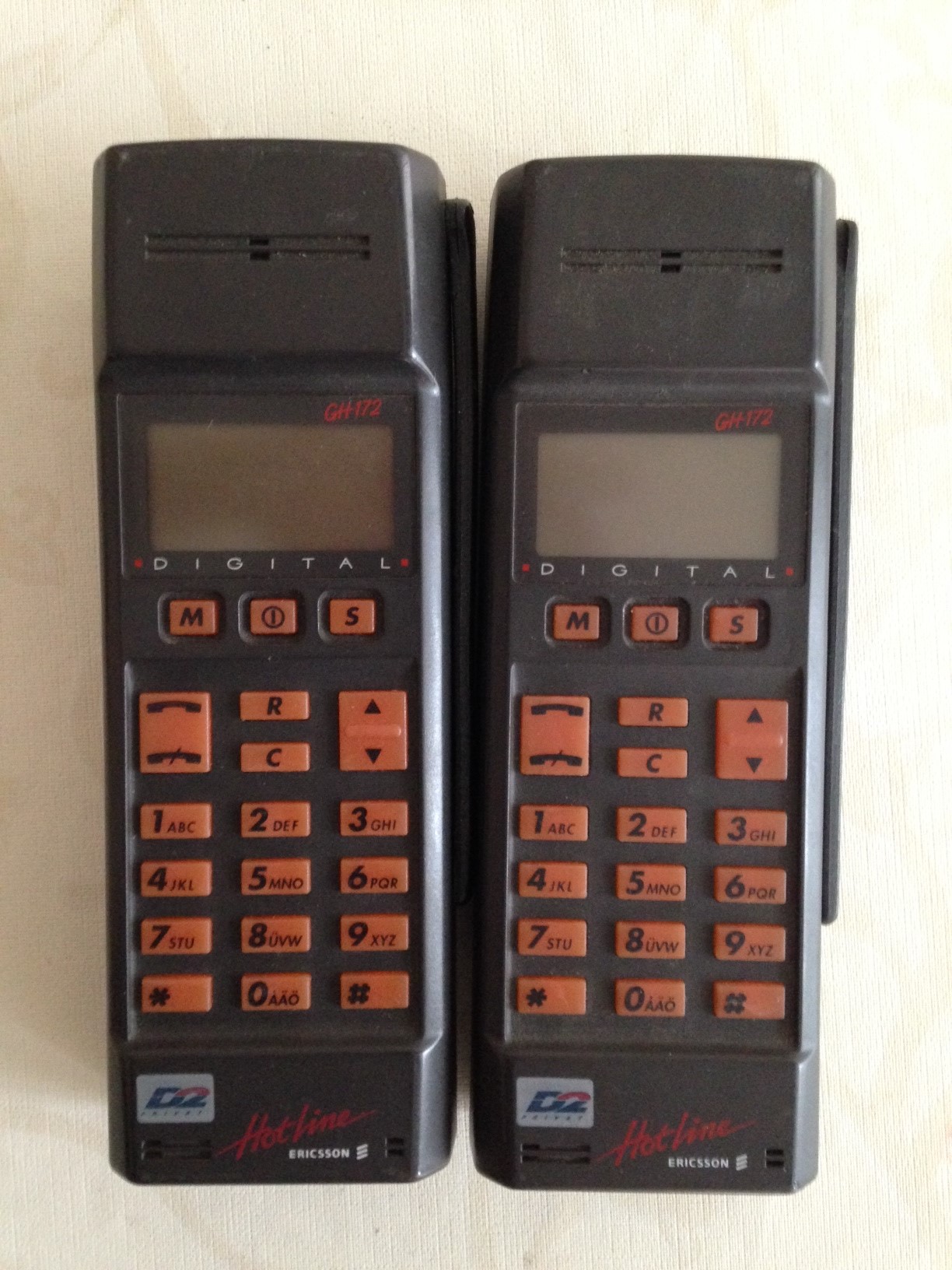-
1992
Hardware Description
ERICSSON PRESS RELEASE.
Ericsson’s GSM Digital Mobile Telephone Receives Approval.
Thursday, November 19, 1992.
Ericsson’s new GSM digital pocket telephone, the GH172, has now received the ITA (Interim Type Approval) certificate from German authorities. The GH172 has passed all segments of the required testing, and was approved for the digital telephone standard in Europe, GSM. Deliveries of the product will begin in Germany in November, 1992.
The Ericsson GH172 is what mobile phones might have looked like had the technology been invented in the 70s. The brown and orange look dates from Ericsson’s first transportable back in the 1980s. They kept the colour scheme and the HotLine brand into the 1990s.
Ericsson’s first GSM phone was a re-engineered version of the similar looking, NH72. N refers to NMT, the old Nordic analogue network, G to GSM and H stands for hand portable/handset. The NH72 was developed from a larger brown and orange creation, Ericsson’s first hand portable, the HotLine Pocket. Nils Rylands, Head of Research at the Ericsson Mobile Telephone Laboratory and his team took a police radio and turned it into a mobile phone. The codename for this project was ‘Curt‘. ‘Curt‘ broke a long running Ericsson tradition.
Up until then, all Ericsson mobile phone research projects had been given female names. The female naming returned for the GH172/NH72, which was called ‘Olivia‘. The successor, a slightly updated version GH174, made in white buttons.
At this point they introduce another character, a modern day global explorer called ‘Harry Hotline’. Harry was the public face of Ericsson’s ‘HotLine‘ campaign. The mobile represented freedom to travel. ‘You could go anywhere the world and stay in touch. At the time this may have been more of a dream than a reality’.
-
Model Number:
GH172 -
Manufacturer:
-
Hardware Type:
Mobile Phone -
Manufacture Year:
1992 -
More Info:
-
We recognize our sponsors starting at $1 per entry.
Learn more at https://www.ithistory.org/benefits

